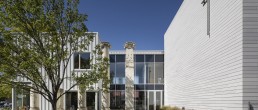
There are a number of leadership models operating in Baptist churches in New Zealand. Some of these models are explained below, with examples of where that model is, or has recently been, in operation except for the sole and senior pastor models. For more detailed information on how these churches function please contact the leadership directly. Church contact information is available online in the annual Yearbook (see baptist.nz).
1. Sole Pastor
The Sole Pastor model operates in churches that are smaller in size (usually under 120 attendees) and employ only one pastor.
2. Senior/Lead Pastor
The Senior or Lead Pastor model operates in churches that are large enough to financially support multiple pastors.
3. Co-Pastoring
In the Co-Pastoring model, the role of the Senior Pastor is spread over two people who share the responsibilities and decision making equally. These pastors may be trained and married to each other, or they may be two trained leaders who are able to work effectively together.
Manurewa, Wellington Central, Kumeu, River Valley
4. CLG: Core Leadership Group / Team led approach
This model is similar to Co-Pastoring but with a larger group sharing both the decision making and responsibilities. A high level of trust and co-operation, with both the CLG and Elders, is needed for this model to succeed.
Whangaparaoa, Karori, South West
5. Senior Pastor non-teaching role
This model has a Senior Pastor, but in a less typical role, as they do not do the preaching/teaching. In this model the Senior Pastor may have strengths in other areas like pastoral care and staff team leadership and is able to spend the bulk of their time in those spaces.
Palmerston North Central ran this model very successfully for a number of years.
6. One church, multiple Pastor-led congregations
In this model the church has multiple congregations, each formed around a common language and culture. Some share the leadership equally, while others retain a Senior Pastor.
Auckland Baptist Tabernacle
This is still a Senior Pastor model, but unique because the church is comprised of multiple ethnic congregations, each with their own pastor and eldership teams.
Otahuhu Community Baptist
Otahuhu has a variation of this with three separate congregations, each with their own pastor, but under the one banner. All three equally share leadership responsibilities.
7. Campus
In the campus model a larger, or host church effectively sponsors and supports a ‘daughter’ church. The host church gives oversight, support, and financial assistance to these small or newly planted churches. The Eldership of the host church employs and manages the pastors of the campus church.
Windsor Park/Waikeke, Eastgate Pakuranga/Te Kauwhata
Waiheke Baptist is a campus of Windsor Park. They have their own pastor based on Waiheke Island, but the overarching leadership and financial decisions of the church sit with Windsor Park. Eastgate Te Kauwhata is a campus of Eastgate Christian Centre (based in Pakuranga, Auckland) and is run on a similar model.
Note:
The campus church model has been significantly adopted by many Pentecostal churches over the last decade (large and small). This enables the local church to focus on ministry and mission but draw from the strength of the large church for resourcing, advertising, finance, strategy, and management. It should be noted that efficiency is possibly at the cost of autonomy.
Future Thinking
Another model that we believe will one day be seen in our churches is the Bi-Cultural Leadership model. Many of our churches, for example Franklin Baptist, are in areas where this may be an effective future model.
Thanks to Tim Palmer for his work on the original version of this document